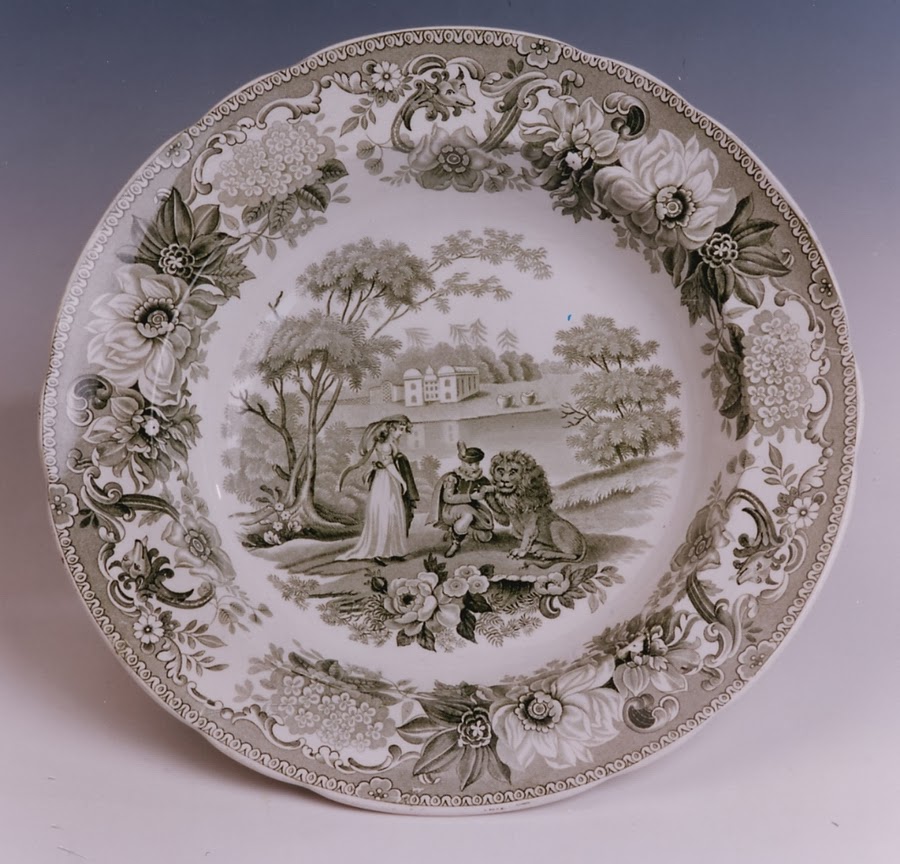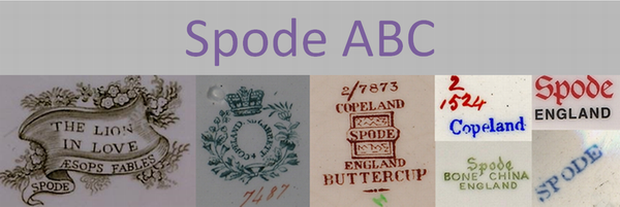This is the surname of at least 2 artists and possibly other employees of the Spode factory in the later 19th century. There is confusion over the name which sometimes has an S added to the end. See the note at the end of my blog Spode and Buttercups and Dandelions and the image here.
Families of workers were employed at Spode and so often there are multiple workers with the same surname and sometimes forename. In the case of Abraham the plural, I think, has somehow become the norm but I now find is incorrect.
In the case of F. X. Abraham the forenames are confused too with the F sometimes being indicated as Felix and others as Francis; and in this image below as Frank. If I can find out the facts I will amend this entry. Some publications on the artists at the Spode factory unfortunately contain much incorrect information...but the Spode archive is always there to check original documents.
 |
| Extract from a list of signatures 1895 |
Acid Etching
Acid etching is a decorative technique which produced a delicate and intricate two-tone gold finish (using real gold). It involved etching a pattern into the glaze using acid.
 |
| A glimpse of the 2nd 'ACID' Pattern book |
A resin was applied to the pot and the pattern 'stencilled out' leaving resin where no pattern was required. The gold was then applied, fired, and then sanded or burnished. The burnishing tool would only touch the raised areas of gold giving a polished finish and the gold deposited in the etched area would remain matt giving an elegant two-tone effect. Burnishing tools had tips of various sizes and shapes made from bloodstone or agate - there is a set of burnishing tools in the Spode museum collection. A similar effect was produced at Spode in the modern era using a good quality gold lithograph laid over a special paste to give the difference in level.
At Spode acid etching finished in about 1941. As far as can been seen from the records in the Spode Archive it began there in the early 1900s. There are two Pattern Books in the archive which record over 500 different acid-etched patterns (just a small proportion of the 75,000 or so patterns recorded). The pattern numbers are prefixed with A.
 |
Saucer, acid etched gold, groundlaid ivory border,
handpainted roses, pattern A112 c1915
|
The technique itself probably originated at the Minton factory in Stoke in the 1860s but may have been subject to a patent and therefore not used by other manufacturers until later.
The practice of acid etching was regarded as highly dangerous in the modern era as the etching was done in hydrofluoric acid which is both poisonous and corrosive. Few manufacturers used acid in the later 20th century although Royal Worcester did. Anyone who wished to use the method today would have to operate under license. I remember discussing this in about 2003 with the Spode Technical Manager and he thought then that it was unlikely that a license would ever be granted.
Aesops Fables
Aesops Fables pattern was first introduced in about 1830 at the end of the Spode period (c1770-1833). It is a multi-scene pattern with each shape in a service featuring a different fable from the famous 'Aesop’s Fables' stories. The pattern had a specially engraved backstamp which included the name of the fable illustrated.
The designs for the Spode pattern were taken from illustrations used in the 1793 edition of the Reverend Samual Croxall's 'Fables of Aesops'. Croxall was published many times, in many formats and illustrated by many artists. The early Spode pattern is found mostly printed in green with other colours, including blue, being rare.
A full list of subjects used can be found in Spode Printed Ware by Drakard & Holdway detailed on my booklist.
In 1879 three designs from Aesops were registered with the British Patent Office by Spode under the Copeland ownership. These were: The Stork and the Frog with registered number 331597 on 28th January; The Eagle and the Tortoise with registered number 333235 on 12th March; The Pot and Kettle with registered number 333236 on 28th March.
In about 1997 the pattern was reintroduced as part of Spode's Blue Room Collection. In 2002 as part of the Signature Collection a large size dog bowl was produced using the fable The Dog and His Shadow.
For a different view on Aesops patterns click Dishy News. And also see my blog post Spode and Aesops Fables.
Agate Ware
Click here to take you to my blogpost Spode and Agate Ware.
Alenite
Click Spode and Alenite for more details of the Spode pottery body.
Andromeda
Go to Leaves on the L page to see this pattern.
Apollo
The practice of acid etching was regarded as highly dangerous in the modern era as the etching was done in hydrofluoric acid which is both poisonous and corrosive. Few manufacturers used acid in the later 20th century although Royal Worcester did. Anyone who wished to use the method today would have to operate under license. I remember discussing this in about 2003 with the Spode Technical Manager and he thought then that it was unlikely that a license would ever be granted.
Aesops Fables
 |
| Soup plate, The Lion in Love printed in green c1830 |
 |
| Aesops Fables backstamp c1830-1833 |
The designs for the Spode pattern were taken from illustrations used in the 1793 edition of the Reverend Samual Croxall's 'Fables of Aesops'. Croxall was published many times, in many formats and illustrated by many artists. The early Spode pattern is found mostly printed in green with other colours, including blue, being rare.
A full list of subjects used can be found in Spode Printed Ware by Drakard & Holdway detailed on my booklist.
In 1879 three designs from Aesops were registered with the British Patent Office by Spode under the Copeland ownership. These were: The Stork and the Frog with registered number 331597 on 28th January; The Eagle and the Tortoise with registered number 333235 on 12th March; The Pot and Kettle with registered number 333236 on 28th March.
In about 1997 the pattern was reintroduced as part of Spode's Blue Room Collection. In 2002 as part of the Signature Collection a large size dog bowl was produced using the fable The Dog and His Shadow.
For a different view on Aesops patterns click Dishy News. And also see my blog post Spode and Aesops Fables.
 |
| Dog Bowl, featuring The Dog and His Shadow,c2002 |
Agate Ware
Click here to take you to my blogpost Spode and Agate Ware.
 |
| Mug, agate ware, possibly Spode |
Alenite
Click Spode and Alenite for more details of the Spode pottery body.
 |
| Game Pie Dish, Alenite, 'Henri IV' c1963 |
Go to Leaves on the L page to see this pattern.
Apollo
 |
| Apollo coffee pot, Royal College shape |
Apollo is the name for wares undecorated, ie plain white, in Royal College shape.
Apollo was also the name of one of the Spode kilns in the 20th century. It was installed in 1969 and was a gas fired glost tunnel kiln for both china and earthenware.
Apollo was the name of a parian statue and a parian bust. The statue had the full name of 'Apollo as the Shepherd Boy of Admetus'. It is detailed in Robert Copeland's book 'Parian: Copeland's Statuary Porcelain' details of which can be found on my booklist.
There is a little more about parian on under P on this Spode ABC.
 |
| Parian statue, Apollo as the Shepherd Boy of Admetus |
April Shape
For more on this shape please click Spode and April.
Art Gallery
You can find out about the Art Gallery on the Spode factory site by clicking HERE> for Spode, The Art Gallery and Trelissick.
Audley
Audley pattern was one of the patterns produced on earthenware with the Royal Jasmine glaze - go to the R page for more on this glaze and related patterns. You can see an image of the pattern by clicking Spode in 1956.
 |
| Audley catalogue page 1938 |

